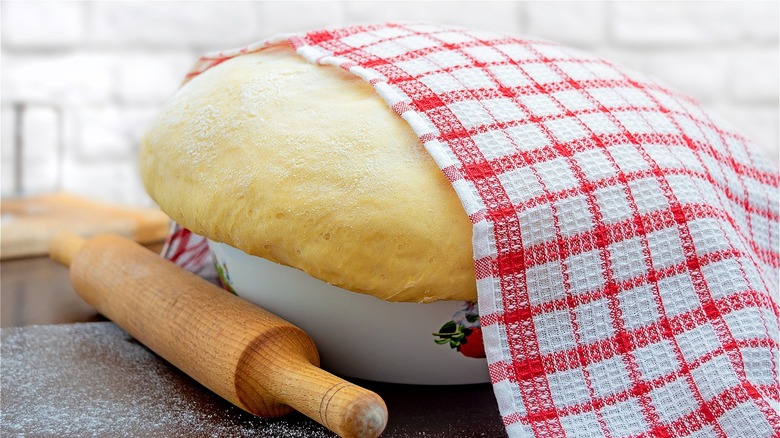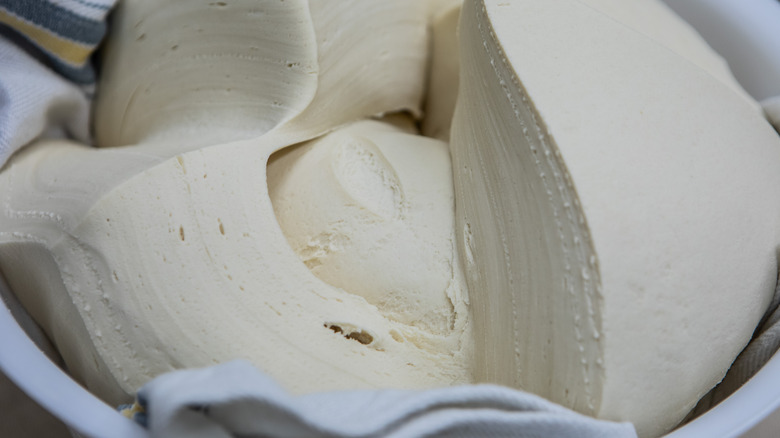How To Know If Your Yeast Bread Dough Is Ready To Bake
The key to a successful bread is the condition of your dough, get it wrong and your bread will be misshapen, caved and doughy even in its cooked state. According to Hotel Management Hub, yeast, flour, liquids, and salt are the ingredients that have an essential role in the proofing process.
Yeast is responsible for creating carbon dioxide, making the dough less dense and lighter. The flour is the base, without wheat flour (or a close substitute) there is no bread, per Kitchn. The protein in wheat flour is gluten and this is what gives the dough its substance, structure, and, once it interacts with yeast, it traps the carbon dioxide produced detracting from the bread's density.
Water is essential to the bread baking process. Without it, solvent ingredients like salt, and sugar, will not dissolve and the yeast will not activate, per King Arthur Baking. Furthermore, the dough's consistency and all bread dough ingredient interactions are dependent on water. Salt serves to regulate the rising process, adding flavor and strengthening the proteins. Without salt, the yeast will cause the bread to rise too quickly resulting in big holes in the finished product, per the Baking Business.
What is a good bread dough?
A vital step in the bread-making process is the application of the aforementioned products — with a bit of mixing and stirring — but most importantly: kneading. Kneading is probably one of the most rewarding activities of the bread baking process, and it is through this action that gluten forms, giving the dough elasticity. (That's why baking gluten-free is a challenge, per Scientific American). Kneading helps the dough reach readiness for bulk fermentation (first rise), then proving (last rise before baking). The dough's state of readiness is determinable through touch.
Good bread dough is resilient, though not hard or dry. It is highly elastic, difficult to break into pieces, and more inclined to stretch. Because of the latter, bread bakers use sharp instruments (dough cutters) to portion dough for rolls and bread, per Taste of Home.
Ready-to-bake dough should spring back after you test it by putting a minor dent in it with your finger. It is consistent without pockets of dry flour or ingredients, and it doesn't stick to the sides or bottom of a dish even after it rises, per the 2014 Great British Bake Off contestant Luis Troyano (via BBC Good Food).

